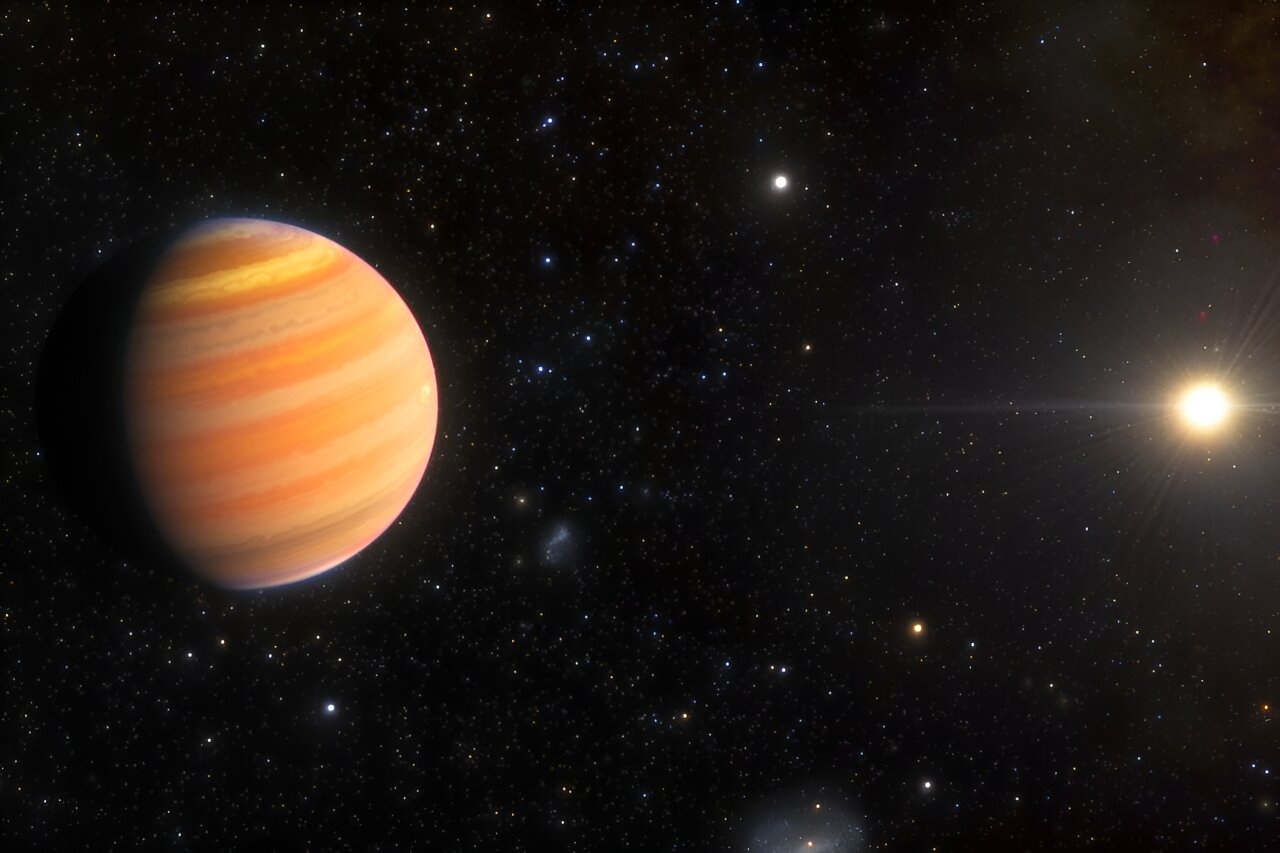Scientists have studied the planet TIC 241249530 b. This gas giant orbits its star in a very elongated eccentric orbit. Scientists believe it is in the process of turning into a so-called “hot Jupiter” and have explained how this may be happening.

“Hot” and “cold Jupiters”
Scientists at the Massachusetts Institute of Technology were able to study the way gas giants turn into “hot Jupiters.” In their recently published paper in Nature, they described their research on the exoplanet TIC 241249530 b.
“Hot Jupiters” are gas giants that are similar in mass and chemical composition to those in the Solar System, but unlike them, are very close to their star. Under these conditions, they are exposed to strong radiation and often begin to vaporize, becoming a scorched rock core.
At the same time to form in these orbits gas giants, according to current theories of planetary evolution, simply can not. The star’s radiation vaporizes volatiles even at the initial stages of the systems’ development. Therefore, rocky planets form closest to the star, followed by gas planets and icy planets on the outskirts of the star.
Gas giant TIC 241249530 b
Actually, it’s no mystery to scientists how “hot Jupiters” appear. This happens because of gravitational perturbations, especially in the first millions of years of the system’s existence. Cold gas giants begin to migrate closer to their stars and eventually stay there. Another thing is that seeing this process in real life is extremely difficult for scientists.
The planet TIC 241249530 b, placed at a distance of 1100 light years, was a real find for them. This gas giant is in the process of transitioning from one state to another. The pericenter of its orbit is already close to the star, while the apocenter, its most distant point, is still in the cold environs.
In addition, the motion of TIC 241249530 b is retrograde. This means that it occurs in the direction opposite to the rotation of the star itself. According to scientists, this gas giant is an ideal candidate to test theories regarding planetary migration.
However, even with it, the research will go on for a very long time. After all, the gravity of the star will lower the pericenter of the planet’s orbit very slowly. It could take a billion years. However, eventually TIC 241249530 b will still turn into a “hot Jupiter”.
According to phys.org


